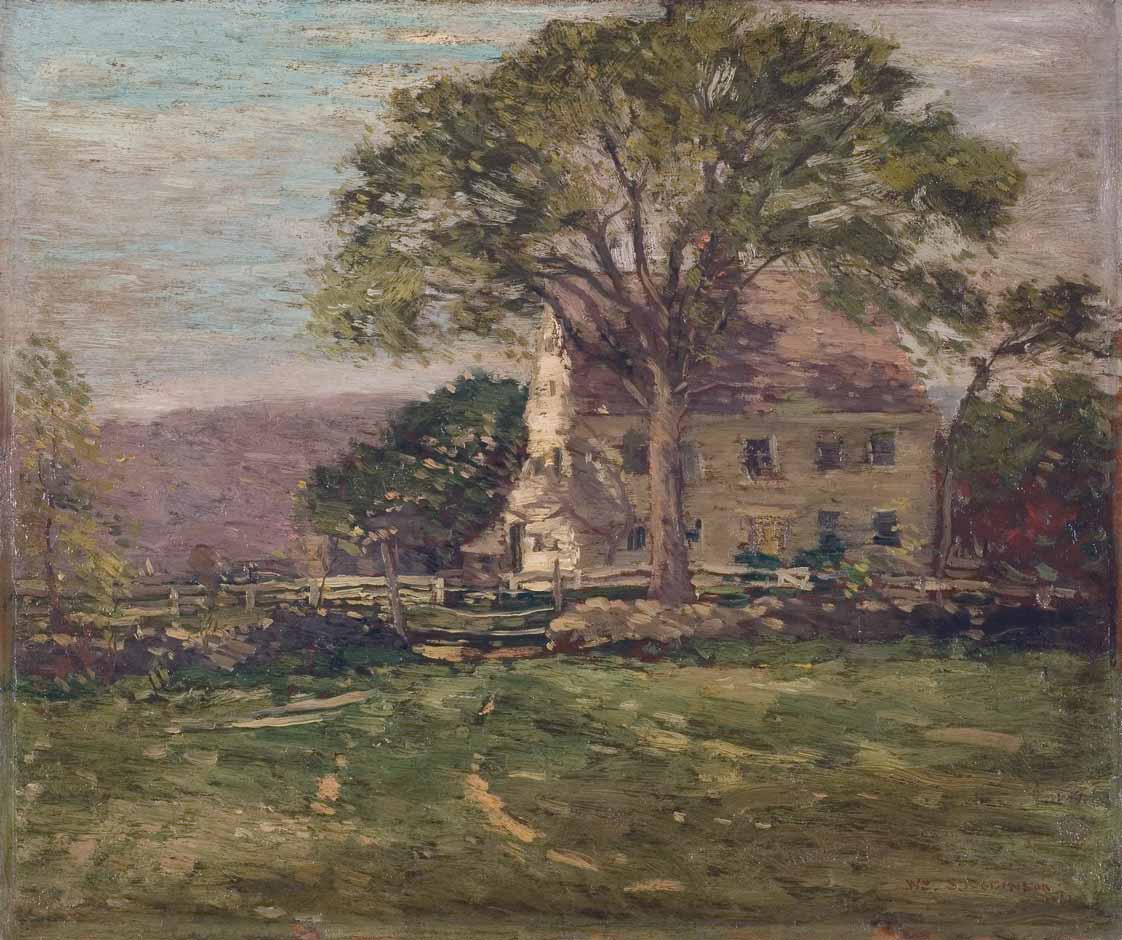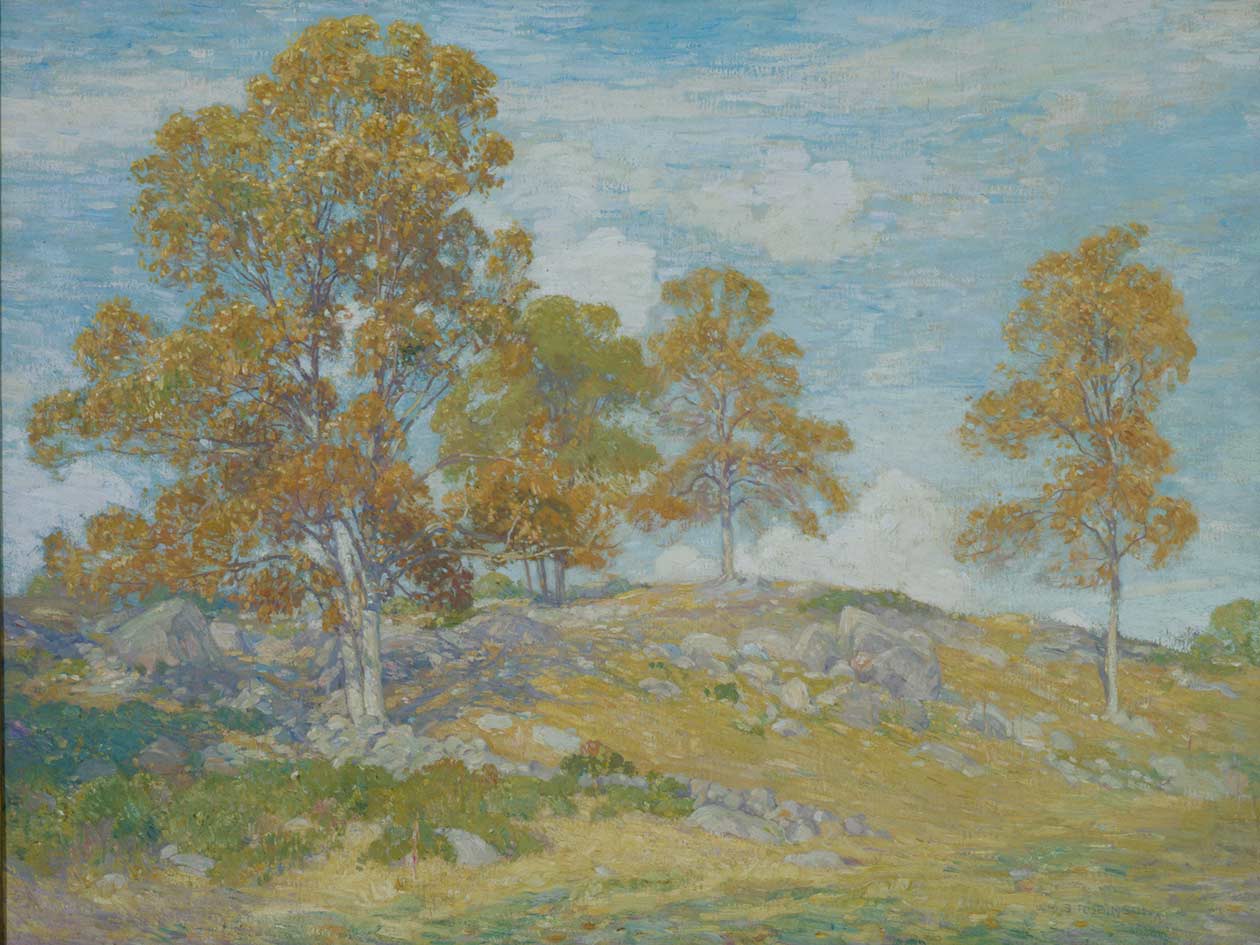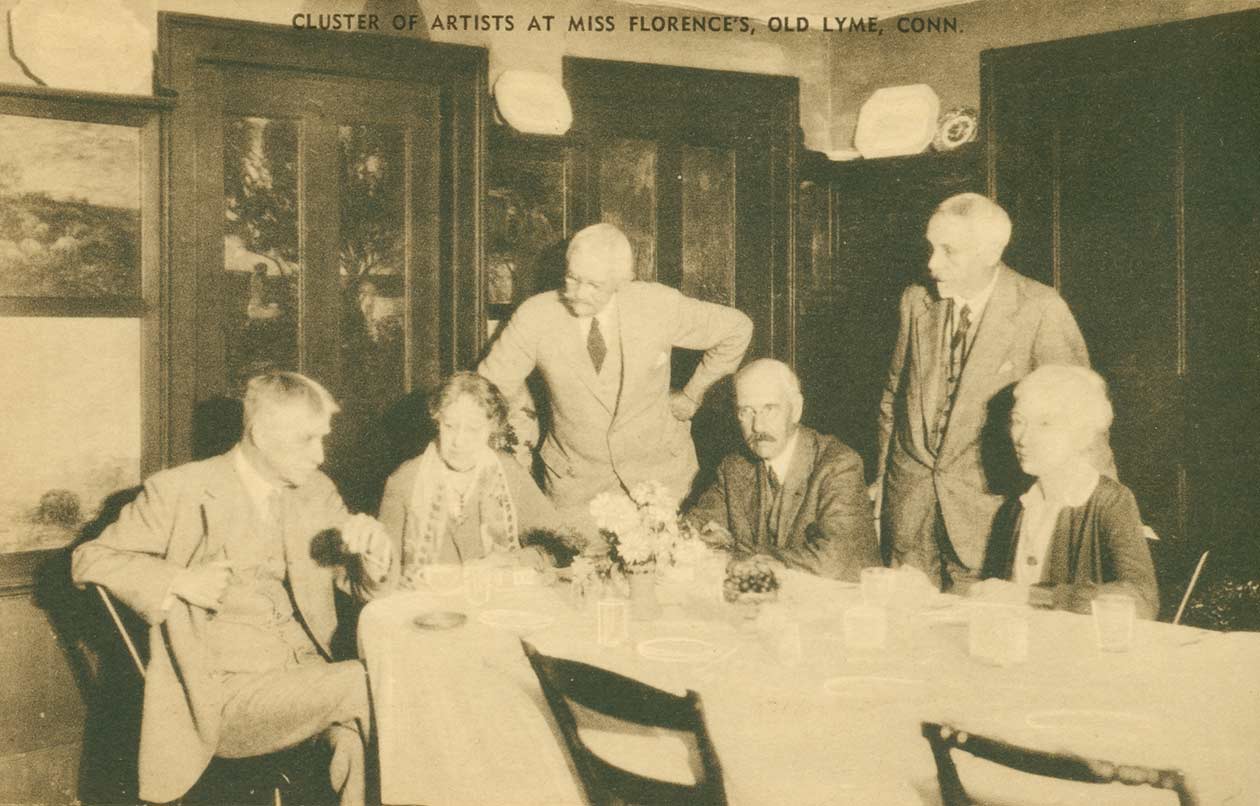Collections
In Situ: The Painted Panels
- Museum Hours: Tuesday through Sunday, 10am to 5pm.
William S. Robinson (1867 – 1908)
Landscape
In this late spring scene, the old white house, which is held in a kind of hug by the trees at its sides, seems a symbol of nurture, while the venerable oak in front speaks of strength, stability, and survival. If William Robinson’s fellow colonist Henry Rankin Poore is to be believed, this very house at some point became Old Lyme’s poorhouse, a refuge for local citizens who had no other place to live.
If so, their shelter was in a home that had endured since the early years of the American republic. That in itself must have offered some hope that all might yet be well. Certainly the vibrant greens and lively brushwork in this painting suggest that this New England house and its surrounding countryside are going to be around for many more years.
Robert Thorson – an expert on New England stone walls – bases this observation on its condition and on the barway, the opening that would at one time have separated two active elements on a farm, such as fields. After the house was built, the owner installed a wooden fence, more effective a barrier than a crumbling stonewall. Fences along stonewalls were once a fairly common sight, but the fences have since deteriorated.
WILLIAM ROBINSON (1867-1908)
LANDSCAPE, 1905
OIL ON WOOD PANEL
GIFT OF THE ARTIST
Robinson found his own comfort in Florence Griswold’s home. He summered there regularly for 15 years, then moved in year-round for 16 more, leaving only after his hostess died in 1937. When he first came to Old Lyme in 1902, perhaps at the invitation of Henry Ward Ranger, he had been a Tonalist painter, but when he returned in 1905, he found Ranger gone and the artists at the Griswold House excited about the Impressionism that Childe Hassam was promoting. Departing from the French Barbizon-inspired landscapes and Dutch fisherfolk scenes he was known for, Robinson enthusiastically embraced aspects of Impressionism at Old Lyme as he began to paint the surrounding New England landscape.
Robinson never tired of the subject matter he found in Old Lyme
A Life-Long Member of the Lyme Art Colony
Although he included a cottage or two in paintings he had done earlier in Giverny, France, William Robinson’s decision to portray an old house for his dining room panel is surprising, for he was essentially a pure landscape and marine painter. Like many of the Old Lyme colonists, Robinson was a well-known and well respected artist when he arrived. He had won honors at national and international exhibitions and would soon garner more. In Old Lyme he found subject matter that interested him for the rest of his life.
He loved the local meadows, especially as they appeared in the autumn, and he never tired of painting the wild mountain laurel that bloomed profusely every June. Clearly, Robinson also noticed the time-honored qualities of the Colonial houses that were all around in Old Lyme.





